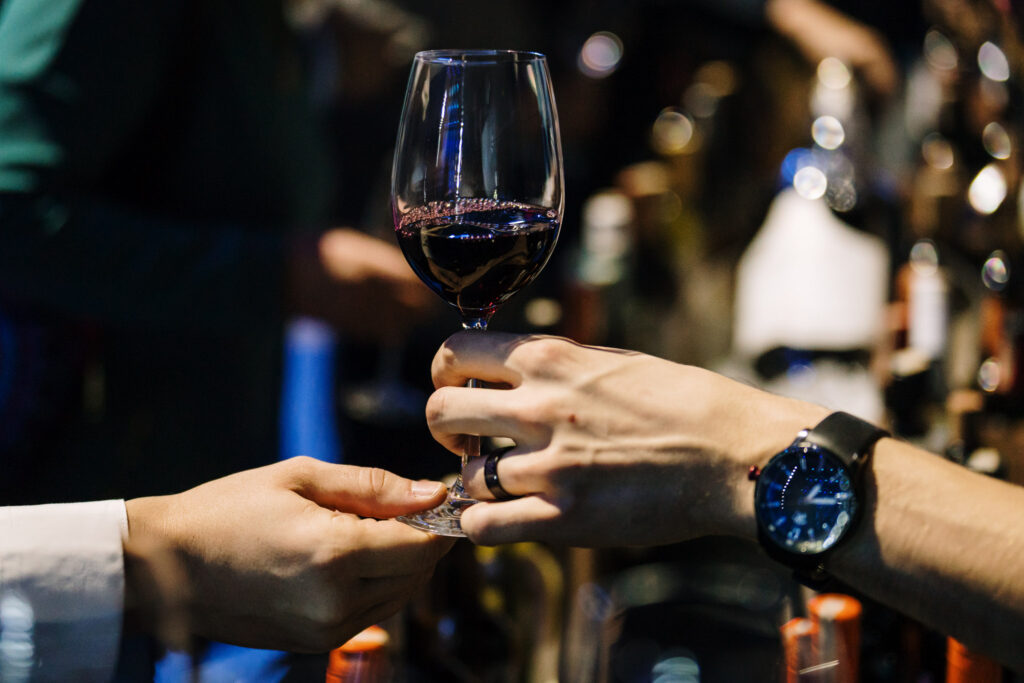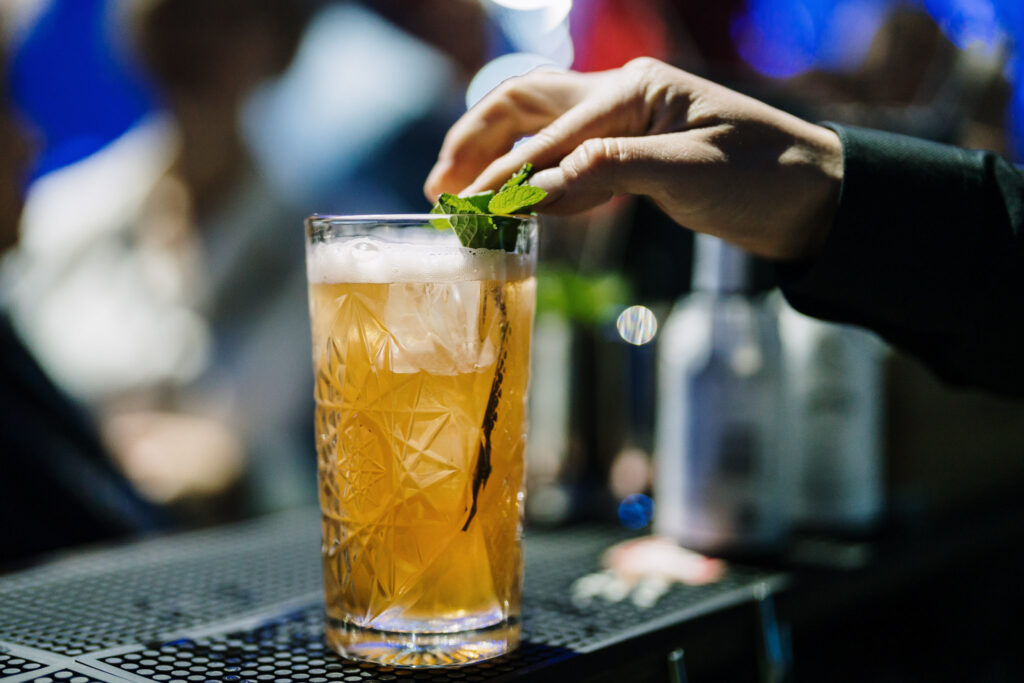Drinks Suppliers – The Architects of Restaurant Exclusivity: Crafting Menus That Impress Even Michelin Inspectors
Restaurants and bars are often the first touchpoints for tourists, shaping their impressions of a country by showcasing its cultural identity, hospitality, and quality of service. Karolis Bučinskas, HoReCa Sales Manager for the Baltics at MV GROUP Distribution LT (formerly Mineraliniai Vandenys), firmly believes this. He points out that Lithuania’s gastronomic identity has been gaining increasing attention in recent years, with the hospitality sector striving to captivate guests through unique experiences and internationally recognized quality.
Karolis, who collaborates closely with bars and restaurants across the Baltics, emphasizes the critical role the hospitality sector plays in shaping both a country’s image and its economy. “Even Antarctica has a bar,” he smiles.
In the interview, he shares insights into the evolving bar and restaurant culture in Lithuania, the exacting standards Michelin-starred establishments listed in the prestigious Michelin Guide demand from their beverage suppliers, and the strategies they use to entice guests. He also discusses the modern trends influencing consumer choices and shaping the future of the industry.

Which premium restaurants do you work with in Lithuania?
In one way or another, we work with all of them. In this case, I wouldn’t even single out the premium segment specifically. Whether it’s a Michelin-starred restaurant or a small eatery in a quiet town somewhere, we work and will work with all of them in the same way because they are all part of our culture and economy. Ultimately, our shared goal is to inspire people to visit restaurants, cafés, and cocktail bars, to offer them high-quality experiences, educate them, pamper them, and encourage them to return – bringing their friends along for the journey.
How would you describe the hospitality culture in Lithuania today? How do our country’s restaurants and bars compare to establishments in other countries?
When it comes to fine dining, Lithuania’s culture is still evolving. It’s challenging to compete with countries that have centuries-old culinary traditions, such as France, Japan, or Italy. However, it’s important to emphasize that Lithuania has made remarkable progress in recent years, taking a significant leap forward.
Today, we are shaping our own identity, moving away from fleeting trends and rediscovering our traditions and customs. I see a growing emphasis on using local, natural, sustainable, and organic ingredients. This approach is helping Lithuania establish its own gastronomic image – one that is increasingly recognized and appreciated on the international stage. We are undoubtedly moving in the right direction.
In our daily interactions with our customers, we see how restaurants demand the highest quality products from their suppliers, along with an exceptional and diverse product range, often tailored to their unique needs. Working with the hospitality sector requires us to deliver not only top-quality service but also professional guidance on beverage selection, ensuring restaurants can create the perfect food and beverage pairings for their guests.
Restaurants seek to work with companies representing well-known and recognised brands. Although the encouraging trend is that the preference for local product is increasingly being heard. We can offer both.
The right drinks, chosen correctly and matched to the dishes, are an integral part of dining in a restaurant. Today, Lithuania has Michelin-starred restaurants that are included in this prestigious guide, offering an exceptional gastronomic experience. Has the Michelin Guide’s move to Lithuania changed the way restaurants and their suppliers work together?
I can say, with a touch of humor, that supplying beverages to Michelin-starred restaurants listed in the Michelin Guide has become an exclusive endeavor. Today, drinks must be paired not only with the food but also with the prestigious Michelin aura! For a restaurant aspiring to earn a star, it’s not just the food that needs to stand out – the wine must also be exceptional. This means excelling in quality, carrying a compelling story, and perhaps even having significance tied to its vintage. Every drink must transform into a gastronomic event in its own right.
Michelin stars demand that we consistently meet the highest standards. Both restaurant sommeliers and we, as beverage suppliers, fully understand this responsibility. That’s why, when we meet, it feels like reconnecting with old friends. Together, we embark on a collaborative search for drinks that not only complement the cuisine but also meet the exacting expectations of Michelin judges – experts who have seen it all yet are always seeking something extraordinary to delight in.

And yet, when it comes to the selection of drinks, are you more guided by the sommelier’s preferences and specific instructions, or do you also have a strong say in advising and suggesting what might be better suited to a particular occasion?
The beverage selection for restaurants is usually a collaborative effort. We bring ideas to the table, while the restaurants often have their own vision. Sometimes, our discussions can feel like culinary battles – us suggesting creative options for exotic cocktails, while the restaurant insists on “just good wine.” The real artistry lies in striking a balance between what the customers desire and what truly complements the food. In the end, it’s a bit like a dance class – it all comes down to having the right rhythm and great partners to create something exceptional.
So is that attitude of restaurants towards drinks menus changing? How much tradition is there in the sector today and how much willingness to discover something completely new?
I would say that over the last ten years there has been a kind of revolutionary change in the premium segment – more taste, more choices and less traditional rules. Now we can go beyond the classic ingredients we all know, to fermented drinks, superfoods and spices to make a drink like a work of art – both tasty and healthy, and something you can tell your friends about on social media.
Non-alcoholic cocktails are no longer just an “I’m driving” option, but really stand out with their unique flavours. Entrepreneurs have also started to think more seriously about sustainability – no longer afraid of organic and local ingredients.
Even a seemingly traditional and hard-to-change menu item like the wine list is changing. No longer is it just French Bordeaux, but also small, recently discovered wineries whose wines have a completely unique taste and aroma. Of course, restaurants are all about great food, but drinks add a kind of mystery to dinner, making it more than just a dining experience.
There are, of course, certain classic brands that consistently deliver exceptional quality and lend an air of prestige. These brands often come with captivating stories, which are worth sharing to immerse guests even further into the world of gastronomy. That’s why we continuously share the stories behind our products, enabling restaurants to use them as a tool to enhance the customer experience and create deeper connections with their guests.
We also aim to bring more niche products and global gastronomy trends to the Lithuanian hospitality sector. I would say that beverage suppliers today are more than partners, they are the architects of the uniqueness of each restaurant. Top restaurants often have their own unique preferences and we have to be flexible and always find the best solution. This partnership builds trust, we are like real team members for the restaurants, working together to achieve quality, innovation and sustainability.
What are the global beverage trends the world is seeing at the moment? Are Lithuanian restaurants actively following them?
There is a clear orientation towards wellness and sustainability, both globally and in Lithuania. People are opting for plant-based, low-sugar beverages, fermented products like kombucha or sparkling tea. Non-alcoholic beverages such as alcohol-free beer and wine are also becoming increasingly popular. People want to enjoy the taste without the headache. Coffee culture is also thriving, and special matcha drinks are a real hit. The beverage world in Lithuania is moving into a healthier and more responsible phase, where both taste and conscience matter.
On the other hand, spirits remain an important part of Lithuania’s identity. Even traditional drinks such as vodka are being rediscovered through the prism of quality and uniqueness. The world of beverages in Lithuania seems to be merging old traditions with new wellness trends.
Sustainability is also on the rise: more organic ingredients and less plastic. People are increasingly looking not only for drinks that taste good, but also for drinks that are good for the planet.
Beverage culture in Lithuania has evolved significantly in recent years. Consumers now place greater value on quality and uniqueness, seeking drinks that turn every sip into a miniature culinary adventure – ranging from distinctive craft beers to elegant, sophisticated cocktails. Each choice becomes a journey, a small celebration of a unique world.

What is the relationship between premium restaurants and Lithuanian beverage production – what is the prevailing attitude?
Lithuanian drinks in restaurants are like a long-forgotten family recipe: more and more people are starting to appreciate them, but it still takes some work to make everyone a fan.
Lithuanian beer is probably the best, often becoming the star of restaurant menus: from traditional rustic to modern kraft creations that go well with both burgers and fine dining dishes. Local brasseries triumph and tourists are surprised to discover that beer can be so diverse and sophisticated.
In the wine world, the situation is more complex. There is still a perception that good wine is made only from grapes, not currants or apples, as in Lithuanian wines. However, some restaurants are already starting to treat such wines as a gourmet accompaniment to dessert, as if they were a Baltic port.
Cocktails with Lithuanian ingredients, such as mead or herbal concoctions, are becoming a real find for creative bartenders who want to combine tradition with modernity. These drinks not only attract tourists with their authenticity, but also attract locals who want to discover familiar flavours in a new way.
Most importantly, Lithuanian drinks carry their own rich history. Their distinctive flavors and uniqueness captivate even the most discerning guests. So, if your restaurant aims to serve something not only delicious but also authentically memorable, Lithuanian beverages are the ideal choice. What more do you need to leave a lasting impression? Just true Lithuanian tradition and unparalleled quality.
Do Lithuanian restaurants have any unique features that interpret global trends in their own way?
Local ingredients are a staple in Lithuania’s top restaurants, as Lithuanians have a deep-rooted love for their native berries and herbs. For instance, rather than serving international cocktails, many establishments offer traditional drinks like krupnikas and samanė – beverages that unveil Lithuania’s unique charm to foreign guests.The premium Lithuanian approach is centered on authenticity and simplicity rather than global flashiness. Here, you won’t find the Instagram-style glamour, but instead, you’ll experience real food made with genuine ingredients, paired with drinks that perfectly complement the meal.

